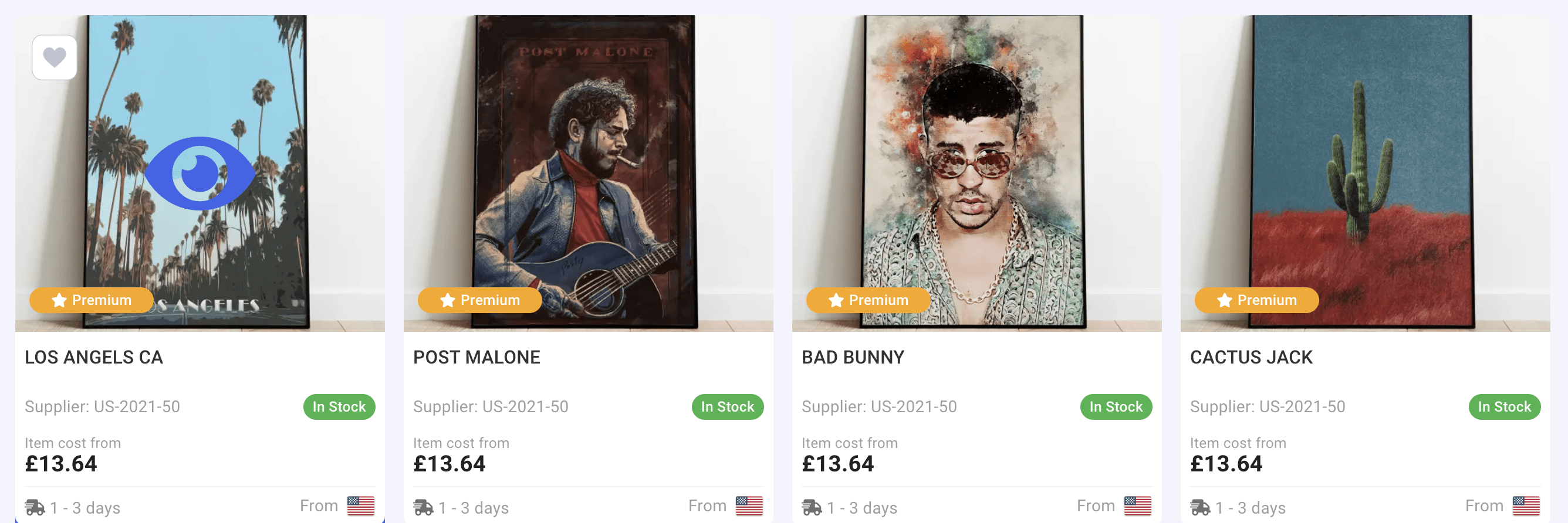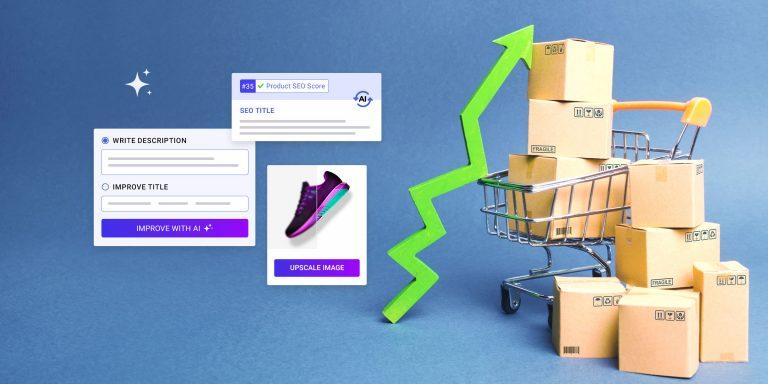We’re living in an era where being environmentally conscious is no longer optional but essential. Businesses in all sectors are looking for ways to reduce their ecological footprint. Dropshipping is no exception.
Green dropshipping is essential if you want to mix profitability with sustainability. And we strongly recommend that you aim for this, no matter what you’re selling. So, in case you’re new to this, which we believe you are if you’re here, what does green dropshipping mean, and how can you implement eco-friendly practices in your dropshipping business?
Read on as we journey into the world of sustainable dropshipping and explore strategies to adopt eco-friendly practices for a better future.
Table of Contents
Understanding green dropshipping
First, let’s explain what green dropshipping is. Green dropshipping means adopting eco-friendly practices in every aspect of your dropshipping business. From sourcing products and packaging materials to shipping methods and customer service, every element can be optimized to reduce your store’s environmental impact. The goal is not only to run a profitable business but also to contribute positively to the environment and the planet we all live in.
Why green dropshipping matters
Well, why indeed? As you can imagine, the ecommerce industry, like any other type of business, including dropshipping, has a significant environmental impact. Packaging waste, carbon emissions from shipping, and the mass production of low-quality products all contribute to environmental degradation. By adopting green practices, you and all dropshippers can play a crucial role in mitigating these negative effects.
Here’s why we believe green dropshipping is essential:
- Reducing waste: Eco-friendly packaging and sustainable products help reduce the waste generated by online shopping.
- Lowering carbon footprint: Sustainable shipping practices can significantly cut down on carbon emissions.
- Enhancing brand image: Consumers are increasingly supporting businesses that prioritize sustainability. Green dropshipping can enhance your brand’s reputation and attract eco-conscious customers.
- Long-term savings: Sustainable practices often lead to cost savings in the long run. For instance, reusable packaging can reduce packaging costs over time.
The environmental impact of ecommerce
Worldwide ecommerce sales have been on a steady climb, with a significant surge during the COVID-19 pandemic. In 2023, global retail ecommerce sales reached an estimated 5.8 trillion U.S. dollars, and a 39 percent growth is predicted over the coming years, with expectations to surpass eight trillion dollars by 2027. This huge growth has put significant pressure on global transportation systems, which are struggling to keep up with the expectation of next-day delivery from consumers.
As such, in 2021, multiple retail industry groups, representing 65 million transport workers, wrote an open letter to the UN heads of state. They warned that if ecommerce sales continued at this pace, worldwide transport systems were at risk of collapse.
Let’s also look at the CO2 emissions from packaging plastics. At the moment, we produce over 400 million tons of plastic packaging every year. Yet, of the 7 billion tons of plastic waste generated globally so far, less than 10 percent has been recycled.
And the environmental cost doesn’t stop there. CO2 emissions from shipping and returns are another critical issue. Projections indicate that by 2030, the number of delivery vehicles required will increase by 36%, leading to an additional 6 million tonnes of CO2 emissions.
These figures highlight the urgent need for more sustainable practices within the ecommerce industry. Without significant changes, the very systems that support the convenience of online shopping may become unsustainable.
Read more: Dropshipping And Ecommerce Key Statistics in 2024
The rise of eco-friendly consumers
Recent reports indicate a growing shift in consumer behavior towards sustainability. In a 2020 McKinsey US consumer sentiment survey, more than 60 percent of respondents said they’d pay more for a product with sustainable packaging.
And this next report released by The Round Up in 2023 about environmentally conscious consumers uncovers the following data:
- 75% of sustainable goods sell better online than in-store
- 78% of consumers feel that sustainability is important
- 62% of people say they “always or often” seek products to purchase because they are sustainable
- 55% of consumers are willing to pay more for eco-friendly brands
- 84% of customers say that poor environmental practices will alienate them from a brand or company.
Due to this rise of eco-friendly consumers, 75% of businesses are making already commitments to sustainable packaging. Moreover, big names like Nike, Garnier, and Patagonia are leading the way by incorporating recycled materials in their manufacturing processes.
Dropshipping businesses, both large and small, can contribute to this trend by choosing suppliers with robust environmental practices and ethics. Additionally, they can work with dropshipping platforms that connect them with suppliers closer to their customer base, thereby reducing carbon emissions from deliveries.
For example, AppScenic enables you to filter for products from suppliers based in the USA or the EU, making it easier to source your products from locations closer to your customers and thus minimizing environmental impact.

Now, let’s talk a bit about green dropshipping strategies you can follow.
Key strategies for green dropshipping
1. Source eco-friendly products
The first step in green dropshipping is to source eco-friendly products. Look for suppliers who offer sustainable products made from recyclable, biodegradable, or organic materials. Products that have a long lifespan and can be reused or recycled are ideal. Partner with suppliers committed to sustainable practices, and ensure they adhere to environmental standards.
2. Use sustainable packaging
Packaging is a significant contributor to e-commerce waste. Opt for sustainable packaging materials such as recycled cardboard, biodegradable plastics, or compostable materials. Additionally, consider using minimal packaging to reduce waste. Encourage your suppliers to adopt eco-friendly packaging practices as well.
3. Implement carbon-neutral shipping
Shipping contributes to carbon emissions, but there are ways to mitigate this. Choose shipping partners that offer carbon-neutral shipping options. These companies offset their carbon emissions by investing in environmental projects. Additionally, opt for slower shipping methods when possible, as they tend to be more environmentally friendly than expedited shipping.
4. Optimize supply chain efficiency
Improving supply chain efficiency can reduce environmental impact. Work with suppliers to consolidate shipments and reduce the frequency of deliveries. This minimizes transportation emissions and can lead to cost savings. Additionally, consider local suppliers to shorten shipping distances and further reduce emissions.
5. Promote eco-friendly products
Educate your customers about the benefits of eco-friendly products. Highlight the sustainable features of your products in your marketing materials and product descriptions. Use your platform to raise awareness about environmental issues and encourage sustainable consumption.
6. Offer a recycling program
Implement a recycling program for your customers. Provide information on how to recycle your products and packaging. You can also offer incentives, such as discounts or loyalty points, for customers who return used products for recycling.
7. Adopt green office practices
Sustainability should extend beyond your product offerings. If you own an office, implement green practices in your daily operations as well. Use energy-efficient lighting, reduce paper usage, and encourage remote work to minimize commuting. These practices can further reduce your business’s overall carbon footprint.
Case studies: Successful green dropshipping stores

1. EarthHero
EarthHero is a leading example of a green dropshipping store. They offer a wide range of eco-friendly products, from household items to personal care products. EarthHero prioritizes sustainability in every aspect of their business, from sourcing products to packaging and shipping. They also provide extensive information about their products’ environmental impact, helping customers make informed choices.

2. Package Free Shop
Founded by zero-waste advocate Lauren Singer, Package Free Shop offers products that help consumers reduce their waste. The store sources products from sustainable suppliers and uses minimal, eco-friendly packaging. Package Free Shop also offers a recycling program and educates customers about zero-waste living through their blog and social media channels.

3. EcoRoots
EcoRoots specializes in zero-waste and plastic-free products. Their product range includes beauty, personal care, and household items. EcoRoots is committed to using plastic-free packaging and supporting small businesses and artisans who share their sustainability values. Their transparency about their sourcing and packaging practices has earned them a loyal customer base.
Challenges and solutions in green dropshipping
1. Finding reliable suppliers
One of the biggest challenges in green dropshipping is finding reliable suppliers who adhere to sustainable practices. To overcome this, conduct thorough research and vet potential suppliers carefully. Look for certifications such as Fair Trade, Organic, and B Corp to ensure they meet environmental standards.
Or use a platform like AppScenic to find top-rated suppliers that can ship directly from the USA or EU to your customers. Moreover, most of our suppliers follow robust environmental practices and ethics.
2. Higher costs
Eco-friendly products and sustainable packaging can be more expensive than conventional options. However, these costs can often be offset by charging a premium for sustainable products. Additionally, you can also communicate the long-term savings and environmental benefits to justify the higher prices to your customers.
3. Educating customers
Not all customers are aware of the importance of sustainability. Use your platform to educate your customers about the environmental impact of their purchases and the benefits of eco-friendly products. Engage with your audience through blogs, social media, and emails to raise awareness and build a community of eco-conscious consumers.
Read more: Ethical Dropshipping: Navigating Grey Areas in Ecommerce

The future of green dropshipping
The trend towards sustainability is here to stay, and the future of dropshipping will likely see a greater focus on green practices. As consumers become more environmentally conscious, the demand for sustainable products will continue to grow. Dropshippers who prioritize sustainability now will be well-positioned to succeed in the future market.
By adopting green dropshipping practices, you not only contribute to a better future but also differentiate your brand in a competitive market. So, make sure your store and product are sustainable and inspire your customers to join you in making a positive impact on the planet.
Conclusion
Green dropshipping is not just a trend; it’s a necessary shift towards more responsible and sustainable business practices. By sourcing eco-friendly products, using sustainable packaging, optimizing your supply chain, and educating your customers, you can build a successful dropshipping business that prioritizes the planet. The journey towards sustainability may have its challenges, but the rewards, in terms of customer loyalty, brand reputation, and environmental impact are well worth the effort.
Read next: 15 Most Successful Shopify Dropshipping Store Examples











